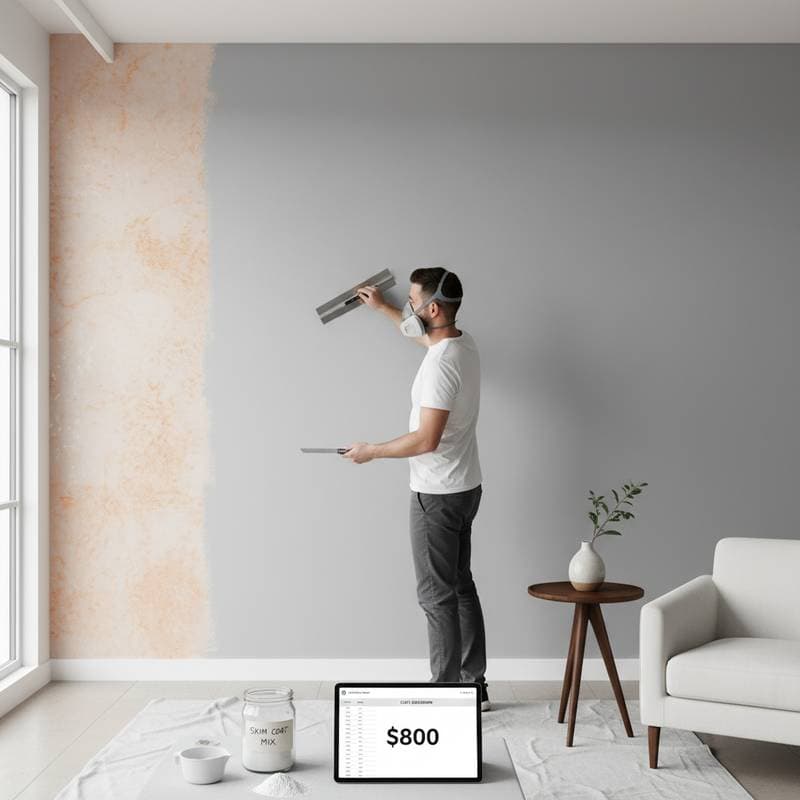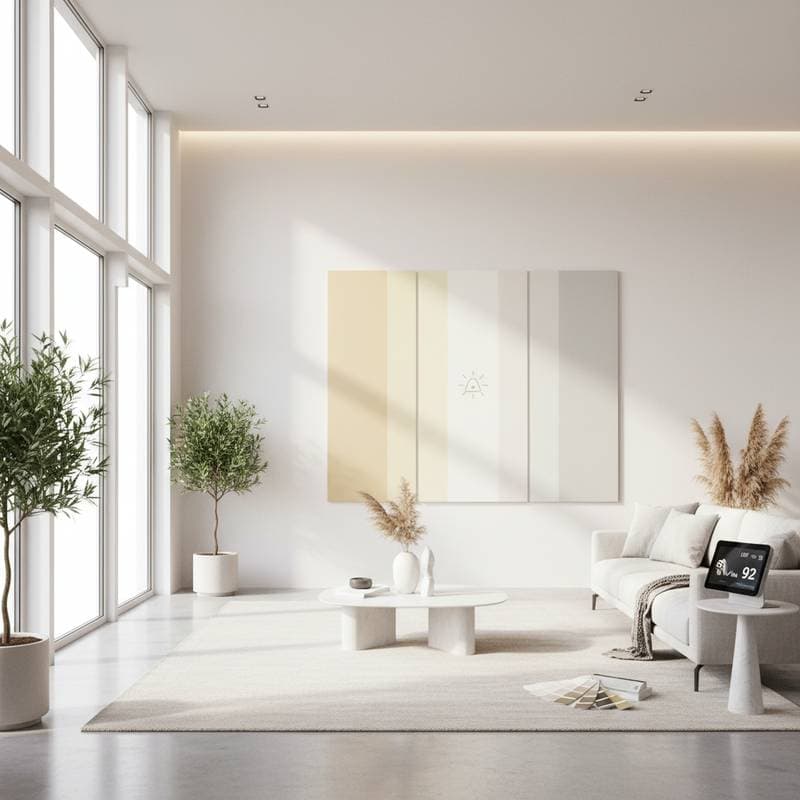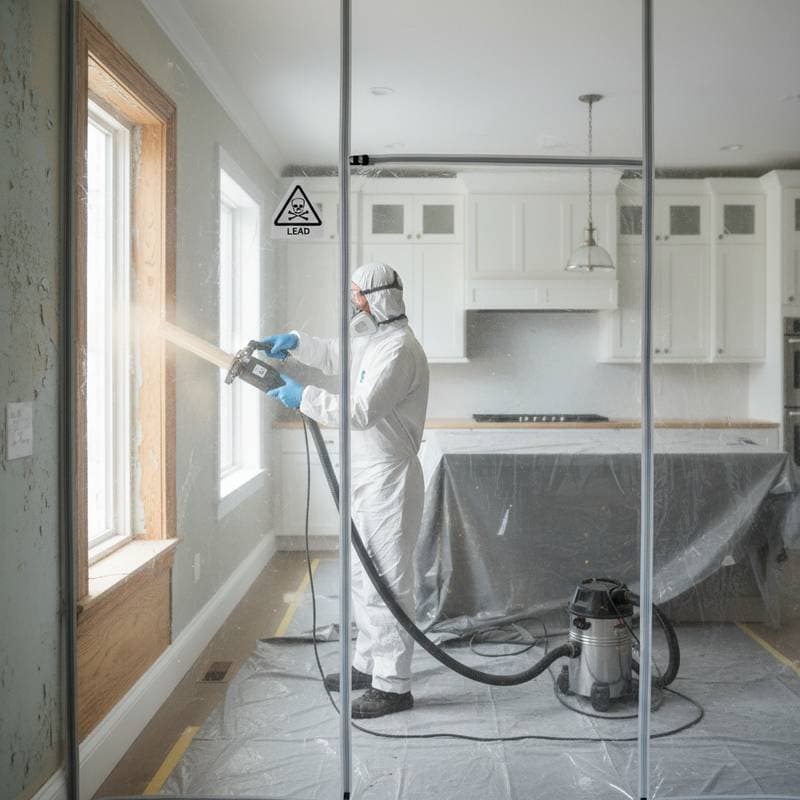Why Satin Finish Is Outselling Flat Paint 3:1
Homeowners increasingly prefer satin finishes for interior walls. This shift leaves flat paint trailing in demand. Satin provides an optimal mix of sophistication, resilience, and utility that aligns with current living demands. As emphasis grows on enduring quality and straightforward care, satin paint combines attractive visuals with practical benefits.
This article examines the factors driving satin's three-fold sales advantage over flat paint. It details pricing variations, performance attributes, and guidance for selecting the ideal finish per room.
Satin Finish vs. Flat Paint Cost Overview
Interior painting expenses vary based on wall condition, paint grade, and professional labor. Satin options command a modest premium over flat varieties, yet their sustained benefits frequently justify the added expense.
Average Cost Ranges by Room Size
- Small room (up to 150 sq. ft.): $350 - $600
- Medium room (150 - 300 sq. ft.): $600 - $1,000
- Large room (300+ sq. ft.): $1,000 - $1,800
Cost Breakdown per Square Foot
- Satin paint: $2.50 - $5.50 per sq. ft. (materials and labor)
- Flat paint: $2.00 - $4.50 per sq. ft. (materials and labor)
- Surface preparation: $0.50 - $1.00 per sq. ft.
- Trim and finishing details: $1.00 - $2.50 per linear foot
The incremental cost for satin stems from elevated resin levels and specialized pigments that enhance luster and cleanability.
Factors Affecting Satin and Flat Paint Costs
Multiple elements shape overall project expenses, spanning prep work to final application. Grasping these allows precise budgeting and informed finish selection.
1. Paint Quality
Premium satin formulations incorporate additional binders and resins for a uniform, light-diffusing surface. Flat paints employ fewer binders, yielding a non-reflective appearance at the expense of robustness. Superior satin resists abrasions effectively, thereby extending intervals between repaints and yielding net savings.
2. Surface Condition
Imperfect or textured walls demand thorough priming. Flat paint conceals defects more readily, whereas satin accentuates them. Professionals might invest extra effort in smoothing or filling prior to satin application, elevating labor charges.
3. Room Function
Demanding zones like kitchens, bathrooms, and corridors favor satin for its tolerance to scrubbing and humidity. Flat suits quieter, ornamental spaces such as ceilings or elegant dining areas.
4. Labor Complexity
Achieving even satin coverage requires precision, as irregularities appear more prominently than with flat. Professionals maintain a consistent application pace to avoid visible lines, potentially extending project duration.
Detailed Cost Analysis by Finish Type
| Finish Type | Basic Range | Standard Range | Premium Range | Key Differences |
|---|---|---|---|---|
| Flat Paint | $2.00 - $3.50 | $3.50 - $4.50 | $4.50 - $5.00 | Hides flaws, low sheen, less washable |
| Satin Finish | $2.50 - $4.50 | $4.50 - $5.50 | $5.50 - $6.50 | Slight sheen, washable, durable |
Flat paint offers the lowest entry cost, but satin proves more advantageous for households needing regular wall maintenance.
Why Homeowners Choose Satin Finish
Superior Durability
Satin's elevated resin content forms a shielding barrier. This fortification withstands scuffs, smudges, and prints that compromise flat surfaces. Households with active children or animals value the ability to clean walls effortlessly without surface harm.
Light Reflection and Aesthetic Appeal
Satin diffuses light subtly, imparting a gentle radiance to walls. It adds depth sans the intensity of high-gloss options. In expansive layouts, satin ensures cohesive illumination, preserving a vibrant, seamless look across spaces.
Maintenance Efficiency
Flat paints retain rather than deflect stains. Cleaning often fades their hue or creates glossy patches. Satin repels dampness and retains vibrancy post-wash, suiting humid environments like bathrooms, kitchens, and utility spaces.
Longevity and Value
Satin endures several additional years compared to flat before requiring renewal. This prolonged service life balances the modest initial outlay, minimizing recurring upkeep costs.
Room-by-Room Finish Recommendations
| Room Type | Recommended Finish | Average Cost (per sq. ft.) | Primary Benefit |
|---|---|---|---|
| Living Room | Satin | $3.00 - $5.00 | Balanced sheen and easy cleaning |
| Kitchen | Satin | $3.50 - $5.50 | Moisture resistance and washability |
| Bathroom | Satin | $4.00 - $6.00 | Mold and mildew resistance |
| Bedroom | Flat or Satin | $2.50 - $4.50 | Flat for soft look, satin for durability |
| Ceiling | Flat | $2.00 - $3.00 | Hides imperfections and glare |
These suggestions illustrate satin's versatility in practical settings, while flat retains niche roles in aesthetics.
Value and Return on Investment
Owners assess painting by annual cost-effectiveness. Satin's resistance to fading boosts its financial return. It also elevates property marketability through its pristine, even presentation.
Cost per Year of Service
- Flat paint: $2.00 per sq. ft. initially, lasts about 3-5 years before repainting
- Satin paint: $2.50 per sq. ft. initially, lasts about 6-8 years with minimal touch-ups
The gap in expenses diminishes progressively, rendering satin the wiser fiscal choice. Its durability and endurance amplify overall worth.
Money-Saving Strategies
- Purchase paint amid promotional periods from suppliers and contractors.
- Handle basic prep tasks personally, such as dusting and minor repairs, prior to professional involvement.
- Opt for standard-grade satin that delivers solid performance without luxury pricing.
- Blend finishes strategically, applying satin to active walls and flat to overhead or focal elements.
- Time projects for quieter months when labor rates dip.
Such approaches yield expert outcomes at reduced expense.
Planning Your Budget
Steps for Effective Budgeting
- Calculate aggregate wall surface to estimate material needs.
- Solicit estimates from several contractors to benchmark fees.
- Choose paint tier according to anticipated use and foot traffic.
- Factor in primer expenses for shifts in color or sheen.
- Anticipate ongoing care by prioritizing resilient options in high-use zones.
Frequently Asked Questions
1. What is the average cost difference between satin and flat paint?
Satin paint typically exceeds flat by 10 to 20 percent. In a standard room, this equates to $50 to $150 extra, influenced by dimensions and workforce costs. The premium reflects resins that confer gloss and toughness.
2. Which rooms benefit most from satin finishes?
Satin excels in busy or damp areas including kitchens, bathrooms, corridors, and playrooms. These demand repeated wiping and outperform flat in stain resistance.
3. How can I save money on satin paint projects?
Cut expenses through self-preparation, standard paint selection, and off-season scheduling. Bulk purchases further decrease gallon rates.
4. Is satin paint harder to apply than flat paint?
Satin demands uniform coverage, as tool marks emerge more distinctly. Skilled applicators sustain a flowing edge with steady motions. Novices benefit from premium tools and sectional work.
5. Does satin paint show wall imperfections?
Satin's light play can reveal textures or repairs. Thorough sanding and priming during prep ensure a flawless base.
6. How often should satin paint be refreshed?
Under typical conditions, satin holds for six to eight years prior to complete renewal. High-wear spots might need spot fixes earlier, yet the finish stays vivid over time.



